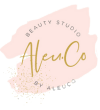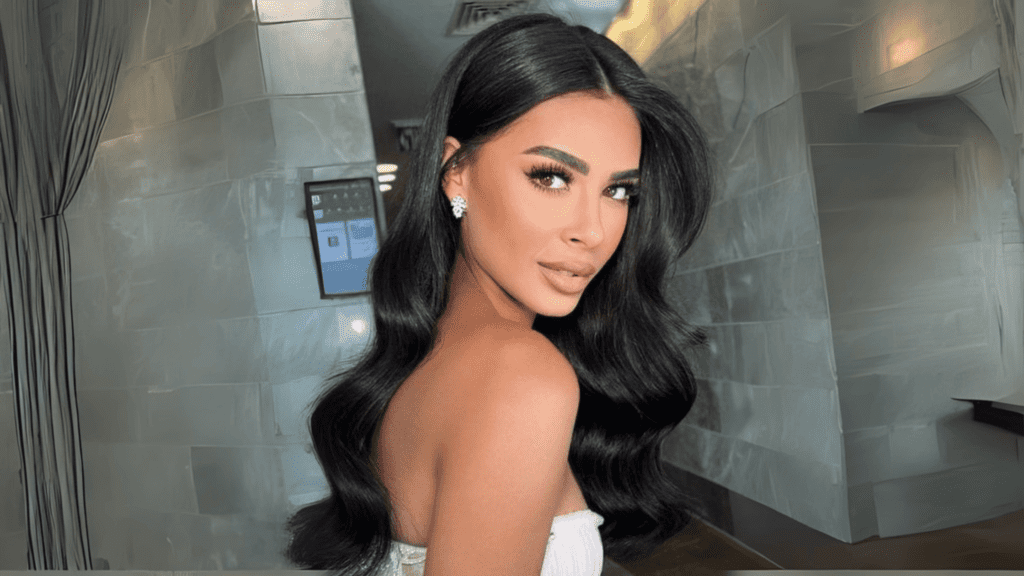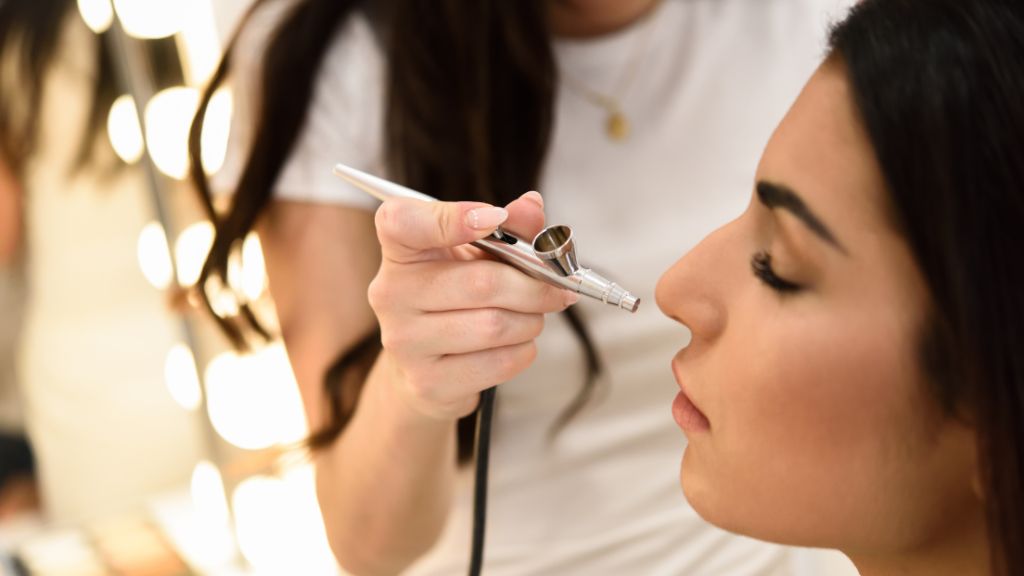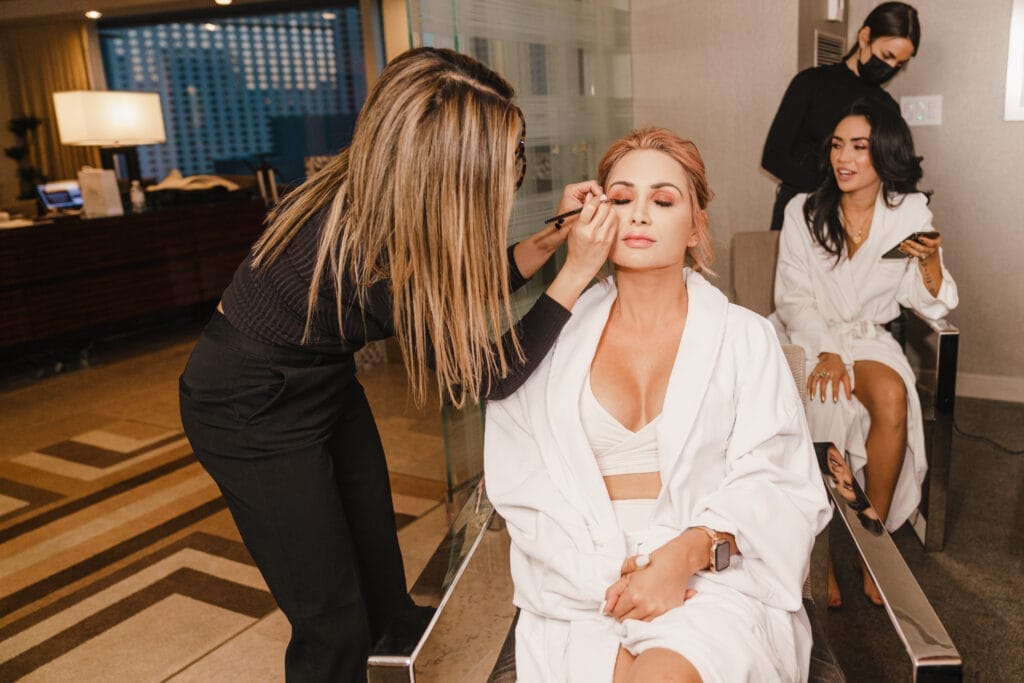
Airbrush makeup and traditional makeup differ significantly in their application methods, coverage, and suitability for different skin types and occasions. Airbrush makeup uses a specialized tool that sprays a fine mist of foundation onto the skin, creating a seamless finish. Traditional makeup involves applying products with brushes, sponges, or fingers, allowing more control over coverage and texture.
To better understand traditional makeup, it’s essential to explore the various tools used in the process. For instance, the Most Wanted Brush Set is an excellent example of a high-quality tool that can enhance the application of traditional makeup. One such tool is the 4DHD Kabuki Brush, known for its ability to provide flawless coverage.
Understanding the differences between these two techniques can help you make informed decisions about which method suits your needs best.
In this article, you will learn:
● The definition and application process of airbrush makeup.
● The pros and cons of airbrush makeup.
● The benefits and limitations of traditional makeup techniques.
● A comparison to help you choose between airbrush and traditional makeup based on your preferences.
Additionally, we will delve into the world of hairstyling, exploring how makeup and hair styling go hand in hand to create a complete look. From premium bridal hairstyling services to elite hair styling services, we will cover various aspects of hair styling that can complement your chosen makeup style. Whether you’re preparing for a wedding, a photoshoot or any special event, understanding these elements will help you achieve your desired look.
Understanding Airbrush Makeup
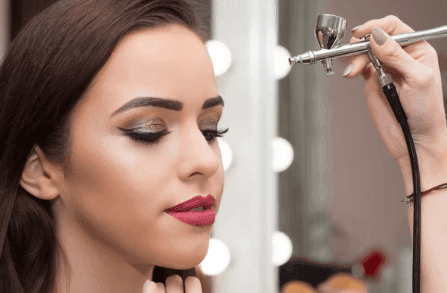
Definition of Airbrush Makeup
Airbrush makeup is a specialized technique that involves using a tool to spray a fine mist of makeup onto the skin. This method stands apart from traditional makeup application, providing an even and lightweight finish that results in a flawless appearance.
Description of the Airbrush Application Process
The application process begins with the artist loading liquid makeup into an airbrush gun, which is connected to an air compressor. The compressor supplies the necessary pressure to spray the makeup. As the artist pulls back on the trigger, a fine mist of foundation is released, lightly covering the skin. The end result is a seamless and natural look that can be adjusted for varying levels of coverage.
Tools Used in Airbrush Makeup Applications
● Airbrush Gun: The primary tool used to apply the makeup.
● Air Compressor: Provides the air pressure needed to spray the makeup.
● Foundation Mist: Specially formulated liquid foundation designed for use with an airbrush.
● Cleaning Kit: Essential for maintaining the airbrush equipment.
Pros and Cons of Airbrush Makeup
Benefits of Using Airbrush Makeup
○ Lightweight FinishThe fine mist creates a lightweight layer that feels almost invisible on the skin.
○ Ideal for those who prefer a natural look without heavy layers of product.
○ Long-Lasting WearKnown for its durability, airbrush makeup can last 6-8 hours without needing touch-ups.
○ Perfect for events that require long-lasting coverage like weddings or photoshoots.
○ Suitability for HD PhotographyThe even application ensures there are no visible brush strokes or lines.
○ Highly favored in industries like film and photography where high-definition cameras are used.
○ Customizable CoverageAllows for buildable coverage, from sheer to full, depending on how many layers are applied.
Limitations of Airbrush Makeup
○ Skin Type Compatibility IssuesMay not adhere well to dry skin or areas with excess hair.
○ Could emphasize flaky or textured skin if not properly prepped beforehand.
○ Challenges with Touch-UpsDifficult to reapply once set; touching up can disrupt the initial application.
○ Requires carrying around specific tools and products for maintenance.
○ Initial Cost and MaintenanceHigher upfront cost due to specialized equipment.
○ Requires regular cleaning and maintenance to ensure longevity and performance.
○ Learning CurveTakes practice to master the airbrush technique.
○ Requires skill to achieve consistent results, making it less accessible for beginners.
Understanding these pros and cons helps in determining whether airbrush makeup aligns with your specific needs, preferences, and skill level. However, if you’re looking for alternatives or want to explore more about traditional makeup techniques, you might want to consider professional services such as those offered by AleuCo Beauty Studio which include expert hair styling and makeup application tailored for various occasions including red-carpet appearances, special events, production events, photoshoots, corporate events, etc.
Additionally, they provide full-face professional makeup applications suitable for date nights or parties, along with tailored services for production requirements through their NYC Half Day Production Rates.
Exploring Traditional Makeup Techniques
Pros and Cons of Traditional Makeup
Traditional makeup techniques have been a staple in the beauty industry for decades, offering a range of application methods that cater to various needs and preferences. These methods include the use of brushes, sponges, and even fingers, each providing unique benefits.
Pros:
1. Increased Control over Coverage Levels: Traditional makeup allows you to build coverage gradually. Whether you’re aiming for a sheer, natural look or full coverage to conceal imperfections, brushes and sponges offer precise control.
2. Texture Adjustments: The versatility in texture options is unmatched. You can choose from liquid, cream, powder, or stick formulations based on your skin type and desired finish.
3. Suitability for Targeted Applications: Brushes and sponges allow for targeted applications. Concealers can be precisely applied under the eyes or over blemishes without affecting the surrounding areas.
4. Customization Options: Traditional makeup techniques offer greater customization. You can mix different products to create custom shades or finishes that perfectly match your skin tone and type.
Cons:
1. Time-Consuming Application: Achieving a flawless look with traditional makeup often requires more time compared to airbrush makeup. Layering products and blending them seamlessly demands patience.
2. Potential for Uneven Application: Without proper technique or tools, traditional makeup can appear cakey or uneven. Brushes with low-quality bristles may leave streaks.
3. Touch-Ups Required: Traditional makeup may need frequent touch-ups throughout the day, especially in hot or humid conditions where sweat can break down the makeup.
4. Hygiene Concerns: Brushes and sponges require regular cleaning to prevent bacterial buildup, which can lead to skin issues like acne.
The versatility in coverage and texture adjustments makes traditional application methods appealing to those who appreciate customization and control over their makeup routine. Using brushes or sponges allows for precise application, making it easier to target specific areas such as under-eye circles or blemishes.
Exploring these aspects provides a deeper understanding of how traditional makeup stands out in terms of flexibility and personalization compared to airbrush makeup. This knowledge helps identify which method aligns best with your needs and preferences when considering airbrush makeup vs traditional makeup.
For those preparing for special occasions like weddings, bridal makeup application services can provide
The Verdict: Which Is Better?
When deciding between airbrush makeup vs. traditional makeup, understanding the application methods can help you make an informed choice.
Airbrushing involves using a specialized tool that sprays a fine mist of foundation onto your skin. This technique provides a lightweight, even coverage that is ideal for high-definition photography and long-lasting wear. It’s particularly effective for events where a flawless finish is essential.
Traditional application methods, on the other hand, utilize brushes, sponges, or fingers. This allows for greater control over coverage and texture adjustments. Traditional makeup offers versatility in coverage—ranging from sheer to full—and can be customized to suit different areas of the face, like under-eye circles or blemishes.
Key Points:
● Control Over Application: Traditional tools offer more control over how much product you apply and where you apply it.
● Customization Options: With traditional makeup, you can easily mix products to achieve the desired texture and finish.
● Versatility in Coverage: Traditional makeup provides flexibility in coverage levels and textures, making it suitable for various skin types and occasions.
Ultimately, the choice between airbrush and traditional makeup depends on your specific needs and preferences. For an event requiring long-lasting wear and high-definition readiness, an airbrush might be the better option. For everyday use or situations requiring target-specific applications, traditional makeup’s flexibility offers significant advantages.
